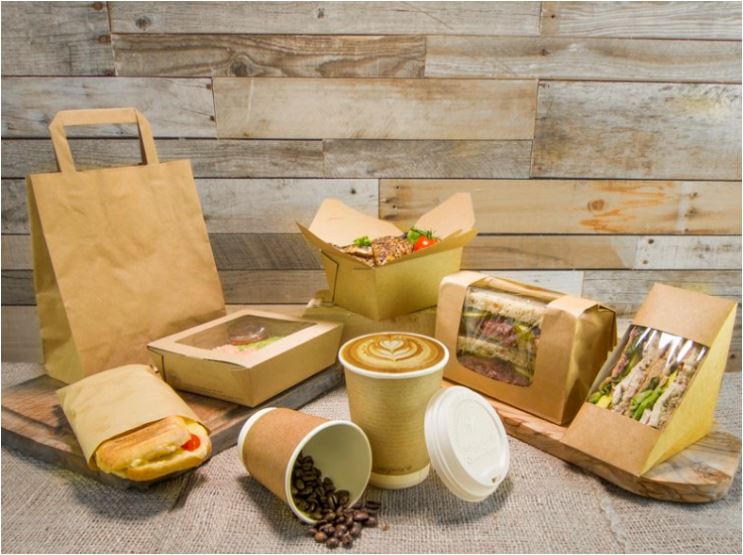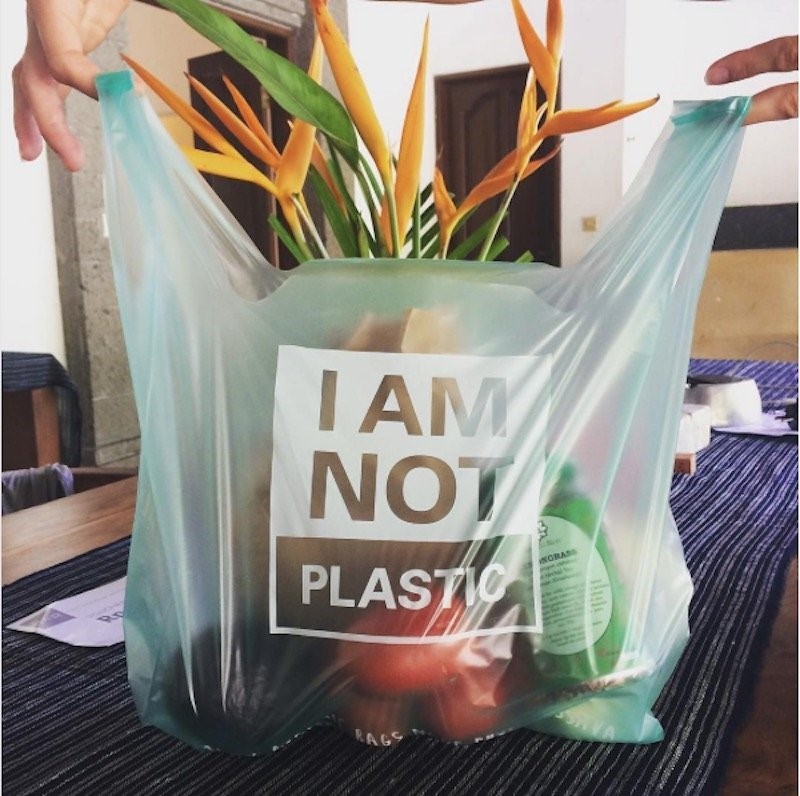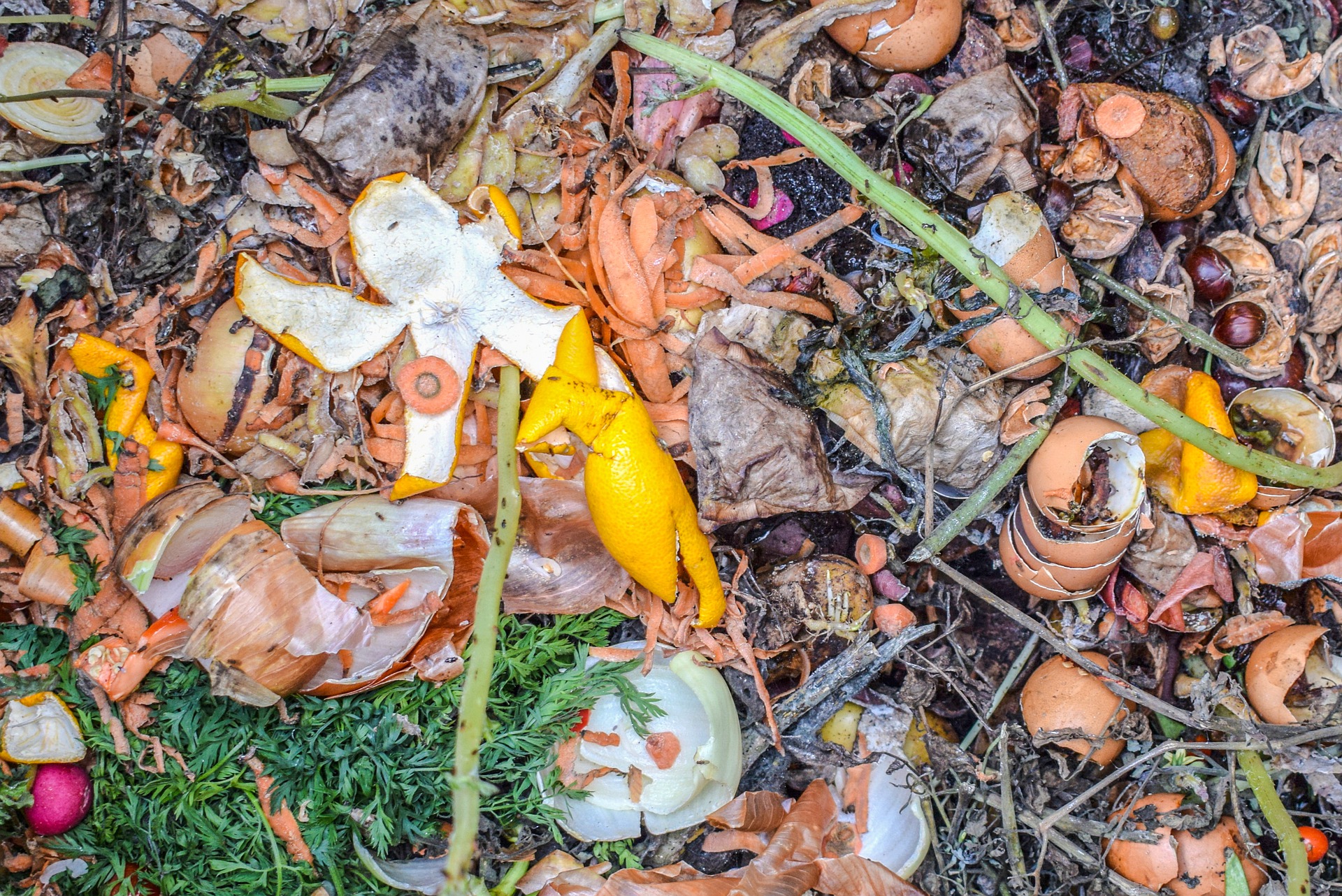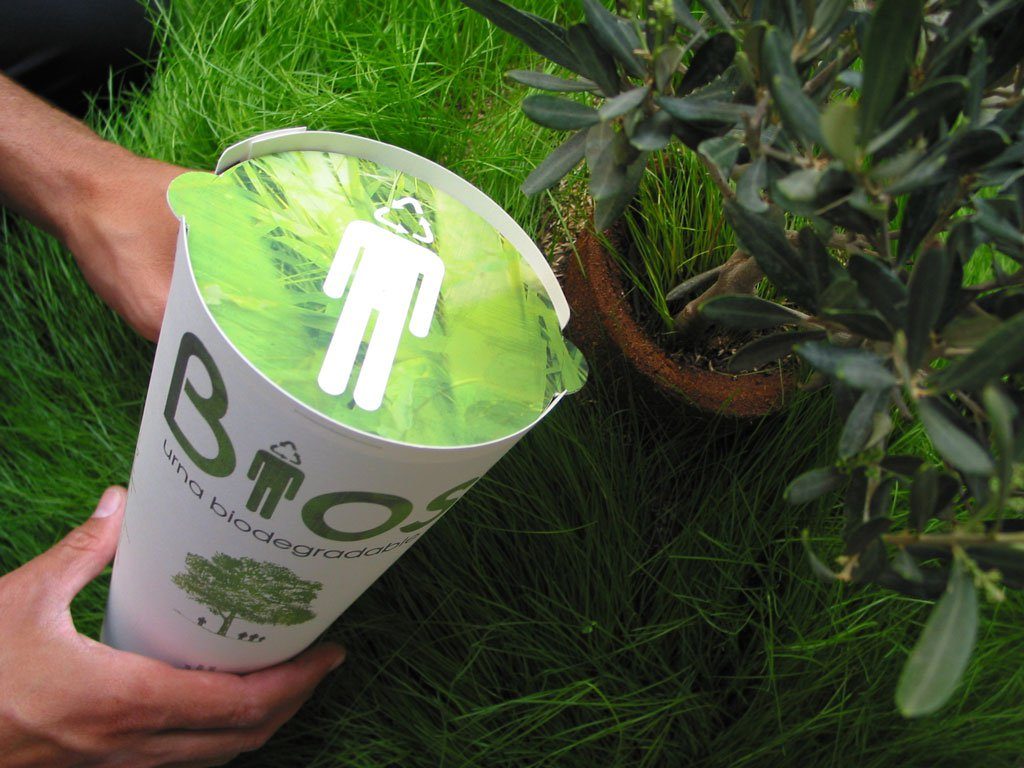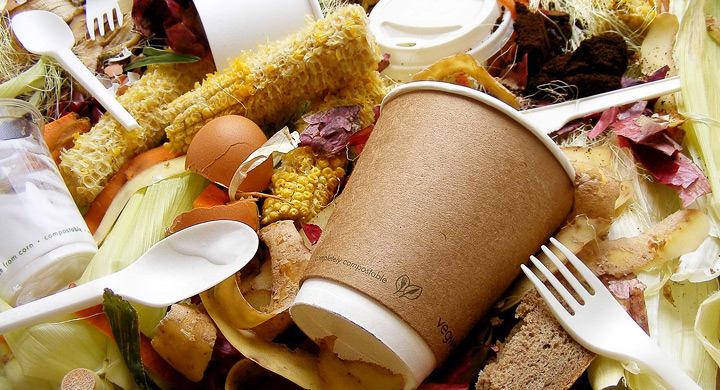Ecological materials have the function of reducing the environmental impact generated by the excessive consumption of natural resources that end up being treated by aggressive processes for the natural environment. Due to this, the appropriate biodegradable products arise for respecting nature by not generating polluting waste that deteriorates nature, in the following article we will learn about What is a Biodegradable Material? and the elements that can be classified within it.
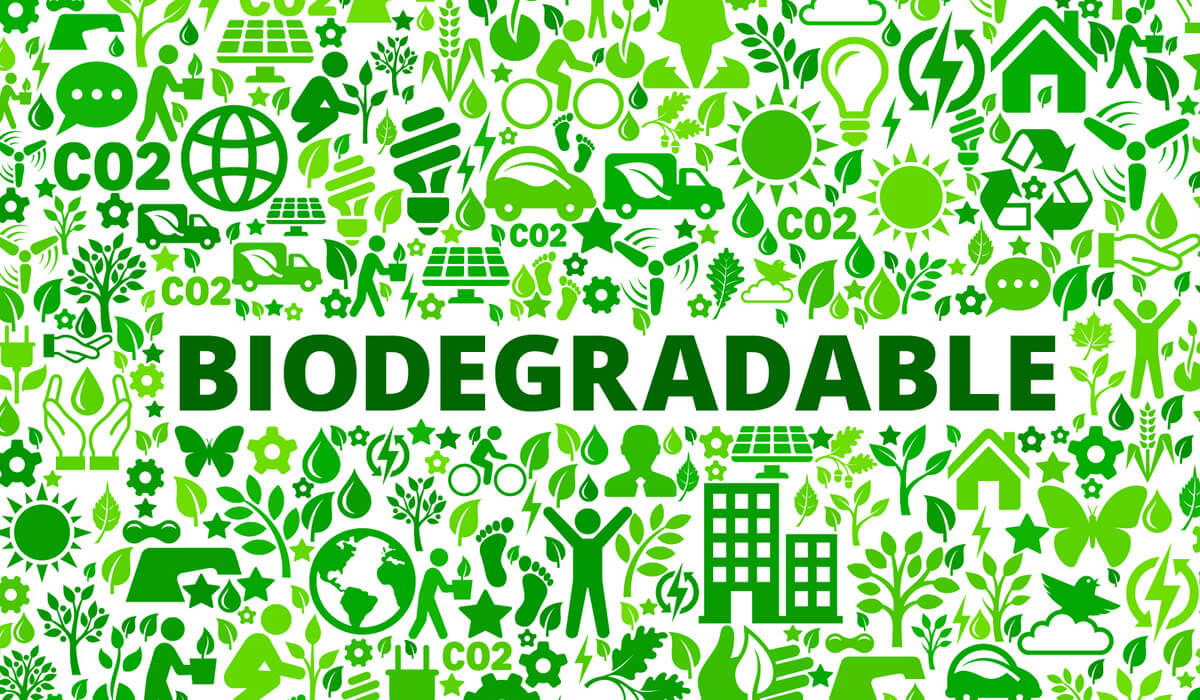
Biodegradable material
The planet earth represents a surface that is made up of a great variety of natural resources that have allowed the development of man and the evolution of society, covering basic needs such as food, clothing, stability, shelter, among others. Due to this, it has established numerous methods that allow the acquisition of these resources, developing companies in various fields to obtain the greatest benefit from the natural environment.
All these practices developed by man have had a high environmental impact since most of the methods used are not usually friendly to the environment and generate waste that has brought serious consequences for the natural environment such as the deterioration of ecosystems, destruction of natural habitats, loss of plant species, extinction of numerous animals, among others.
In addition to this, the human health conditions that have increased exponentially, such as respiratory problems due to the effect of greenhouse gases, consumption of food altered by incorrect handling in agriculture, accumulation of garbage at different points, toxic waste carried by currents of water, among others; all of them have deteriorated the health of urban and rural communities in all countries.
These influences caused by pollution have presented a serious alarm in the countries for decades, for which strategies have been sought to support the environment and the restoration of natural environments, this is attributed to the importance of nature for the maintenance of life on earth, by providing the necessary resources to live, as well as by generating the precious oxygen that all living beings consume.
For this reason, ecological terms and initiatives emerged whose main objective is to reduce the environmental impact generated by man. Among them, biodegradable materials can be highlighted, which are those products that can decompose into the chemical elements that make it up, mainly those that are composed of biological agents that allow their decomposition and become part of the environment.
They represent a very outstanding form of waste treatment, fully related to recycling techniques, focused on reducing, reusing and recycling those products that are harmful to the environment and can be used for another purpose. Highlighting at this point those products considered biodegradable, composed of materials that are used in everyday life and that can be reusable.
Biodegradable materials can be decomposed by the intervention of fungi and the presence of other organisms present in nature. The decomposition stage of this type of substance is due to the attack of bacteria found in the medium, then they extract the enzymes, favoring the transformation of the initial product into simpler elements and easy contact, finally the absorption of these particles by the soil, thus collaborating with the natural and biochemical cycle that the earth's surface participates in.
Otherwise, with those non-degradable materials, when in contact with the ground, they do not degrade and even deteriorate the environment in which they are found. Currently, most products are made with this type of material, such as synthetics, plastics, among others. Synthetic products do not have bacteria that can reduce them, keeping their structure intact for long periods, accumulating and contaminating the environment.
This factor being one of the main concerns for society, due to the fact that there are large accumulations of plastic that have harmed natural environments, destroying the natural habitat, extinction of animal species and deterioration of the vegetation layer. Due to this, new fields of science are emerging focused on creating materials that are eco-sustainable, biodegradable and green, capable of replacing those products that are harmful to the natural environment.
Considering these as a revolutionary aspect that promises significant changes in various areas of society, such as agriculture to the automotive industry and even present in consumer goods and toys. Likewise, the disposal of these ecological products is highlighted, highlighting two relevant options:
- Use roots or microbial strains
It consists of using microbes or bacteria present in plants and roots that allow attacking products to be degraded and even some research ensures that they can create biodegradable materials through common strains (cellular microorganisms).
- Accumulation of organic materials
Another option is to use organic materials that can be used as compost or for some other beneficial purpose for the soil. In this way, the excessive use of processed materials such as packaging, paper, among others, is reduced.
Types of Biodegradable Materials
The elaboration of biodegradable materials is constituted mainly by organisms that use carbon as an energy source, becoming degraded to return to the soil. There are various raw materials for their construction, below we will highlight some of the most popular:
Plastics from Starch
Starch is a natural polymer that is obtained from corn, wheat or potatoes, it is considered a renewable and inexhaustible resource that has a short life cycle but with high yields. To give rise to biodegradable plastic, starch is extracted from corn, and then comes into contact with the microorganisms that consume it to transform into small molecules known as lactic acid, in the next phase it is polymerized to be the base for the production of plastic.
All biodegradable plastics that are made with starch from corn or wheat, are currently manufactured on an industrial scale and are used in waste bags, very popular because they need between six and twenty-four months to degrade and become part of the natural environment.
Plastics from Rye
Rye represents a plant very similar to wheat, thin stem, spiked; by this, starch is obtained from this cereal. Plastics that are made from rye are composed of compressed fibers, all of them to be biodegradable; this type of material can replace those that are made from petroleum derivatives.
The form of this type of material is granulated, widely used for the preparation of dishes that are rich in this substance. Modifying the composition and the entire plasticizing process where they present distinguishable characteristics of density, elasticity, tensile strength, among others. This type of material behaves very similarly to conventional polymers (from petroleum derivatives), being a type of compound recommended for the manufacture of products.
Biodegradable Synthetic Plastics
They are a class of polymer that is transformed to perform functions as part of natural by-products in gaseous state such as carbon dioxide, atmospheric nitrogen, water, biomass, among others. This type of substance can degrade naturally, this is attributed to the addition of chemical additives that favor this condition.
The main chemical families possess ester, amine, and ether functional groups; highlighting mainly those that are oxy-biodegradable and poly (ε-caprolactone), it is a polyester that can easily interact with starch, helping in its biodegradation and natural balance. This type of plastic is known as oxo-biodegradable, being synthetic that allows the incorporation of chemical additives, they are capable of accelerating oxidative degradation that allows the production of biodegradable products.
The application of biodegradable synthetic polymers has covered various areas of society, standing out in the field of health since the 60s, being used in some medicinal utensils. In addition, among some of these compounds, biostable compounds are obtained, which are those made with substances that can maintain their biochemical stability in the human body, being a permanent aid for the production of prostheses, sutures, release of toxins and artificial organs.
Biodegradable Natural Plastics
They are known as biopolymers, which correspond to all those produced from natural and renewable resources, these are macromolecules that are present in living beings or are synthesized by them. Among them, the polysaccharides that are produced by plants such as starch and cassava stand out mainly, as well as those polyesters that are produced by microorganisms or some bacteria, natural rubbers, among others.
Paper
Paper is a type of product that has a laminar shape and is made from vegetable fibers or some other ground material, mixed with water, dried and hardened. It is normally used for various practices but they are mainly used to write and draw, it is also used to make paper towels, notebooks, newspapers, postal mail, brown paper bags, paper plates and paper cups, among other functions. So it is a resource used in everyday life and biodegradable material.
Despite being a biodegradable material, the excessive accumulation of this product can also be harmful due to its slow decomposition, having a polluting percentage in the environment. As people we can collaborate for its appropriate activity in the environment, when throwing used paper it is better to do it in a recycling bin, being properly cleaned, processed and recycled.
The action of recycling paper does not cause any type of pollution, but favors reducing the felling of trees. Being a positive factor because it decreases deforestation on the planet and the destruction of plant species. The paper comes from the pulp of the tree, to obtain this type of raw material many forest areas must be destroyed. If used paper is recycled, it will avoid excessive consumption of trees to obtain paper and the destruction of forest entities.
Natural Fabrics
The fabrics are known as a flexible sheet that is made up of regularly and alternately intertwined yarns. Being used for the elaboration of clothes and chemical fabrics built with cotton, linen, wool, silk fabric, among others. They are well known for being light, easy to use and cheap fabrics; The manufacturing process of this type of fabric stands out for not being subjected to synthetic processes, allowing it to be biodegradable, decompose very easily and do not generate toxic by-products.
Those fabrics that go through a synthetic process do not have biodegradable properties, such as nylon, polyester, lycra, among others. Currently, the use of natural fabrics is recommended to collaborate with the reduction of the environmental impact, it is even recommended to use those used for the production of bed sheets and cushions, curtains, bath towels, rugs and many other things.
Jute Fabric Bags
The bags consist of a type of hollow object of flexible material that is open on one side, they belong to one of the most used goods in society, since it works to contain and transport certain products; The type of material used for this type of object is plastic or polymeric substances, representing one of the main waste and part of the accumulation of garbage, having a high percentage of contaminants.
In this case, a durable option is presented, made of jute or some other natural fabric, remaining intact for years and having sufficient resistance to carry out its functions. They are purchased in a decorated way and are widely seen in health food stores, but they are not the public's favorites, so they choose to use plastic ones that take thousands of years to decompose and have a negative influence on the environment.
kitchen waste
The kitchen is one of the busiest places in homes, because food preparation is carried out on a daily basis, generating a large amount of waste such as vegetable peelings, chicken bones, egg shells, among other waste. . All of them are known as residual foods, being biodegradable and used as fertilizers to be part of the soil.
This represents a widely seen practice in gardening, where they are responsible for providing nutrients that strengthen the minerals in the soil and facilitate plant growth. These plant residues can be used as fodder for animals, mainly livestock, such as cows, horses, pigs, among others. They are widely seen in the gardens of some homes, in the green areas of farms and compost deposits that are used for soils.
Biodegradable products
They are those products that are made with natural components that are also considered non-polluting, because they can be processed by microorganisms, mainly by those that are exposed in the environment in contact with the sun, rain, humidity, among others; causing them to decompose naturally.
Currently there are some products that are made with biodegradable raw materials, the only thing necessary is to review the label and verify that it does not have artificial components that alter its natural properties. Below we will observe a list of some articles that are made with this type of material:
- biodegradable detergent and soap
- lemon batteries
- Bee wax
- Stationary like pencils, folders and erasers
- plant pesticides
- Pots
- jute curtains
- diapers
- Garbage bags
- Cups, plates and other utensils
- glue and paint
- Hair care products
- Cosmetic products
- Litter bins
They are also used in the field of agriculture, offering various much-needed advantages for the natural elements present, where they can be recycled, incinerated and compounded, being added to various systems that enrich the soil, and can also generate by-products such as water, carbon dioxide , methane, among others. It also allows the production of biomass, which consists of a mass of biological organisms found within an ecosystem or area in particular.
It is a non-toxic component used in the soils of the territory, in order to enrich them and strengthen their properties. Biodegradable materials are mixed with different elements that can be fermented, allowing them to act as fertilizer products.
Biodegradable Materials in Automobiles
Highlighting the automotive company that has implemented processes that include biodegradable materials for the construction of products, such as filling the interior of car doors; Currently, flax fibers are used for this function, biodegradable resins that are part of bumpers and many others that have improved the conditions of cars and reduced environmental impact.
This type of material represents one of the best ecological alternatives that provide long-term benefits, allowing products that can be reused to be obtained.
Advantages of Biodegradable Materials
The main function of ecological alternatives is to reduce the environmental impact on the environment and improve the management of natural resources for future generations. Therefore, the advantages of biodegradable materials are very notable, which are discussed below:
Do not Produce Waste
Biodegradable materials are 100% natural, so they can be consumed by microorganisms without any problems, participating in the biochemical cycles that allow the balance of planet earth. It does not generate any type of waste that affects the environment, so it is not kept in dumpsters or landfills.
Without pollution
Because they are purely natural products at the time of decomposition, they do not release any type of chemical or gas into the atmosphere or generate waste that affects the environment. Their impact on the landscape is very low and does not alter the existing ecosystems, all this is attributed to their short life cycle and allowing them to disappear soon or, when recycled, they can be used again.
The opposite is the case with most of today's products, such as batteries or plastics that have a lifetime of years and take many years to disappear, polluting and generating problems in the environment.
They do not generate garbage
They represent a great solution for the accumulation of solid waste found in dumps and landfills. Currently, population growth has demanded a great demand for resources and therefore generating more waste, with islands of garbage that affect the environment. According to studies, there will come a time when the planet will become uninhabitable due to the massive accumulation of waste.
Easy to Manufacture and Handle
In this case, the biodegradable plastic that fulfills functions very similar to common plastic stands out. They can be manufactured by any type of biodegradable materials and maintaining an appropriate quality. The objects can be simple and functional, being able to replace plastic bags and beverage cans, even those very complex products such as a car.
All the elaborated products can be simple to manufacture, cheap and with high biodegradable characteristics; using natural elements that do not need any type of processing and therefore, the amount of chemical substances used is very low.
They do not contain toxins
The process of making biodegradable products is made up of numerous raw materials that do not have toxins. In addition, they do not need an excessive use of energy to obtain the greatest benefit from them, such as oil, which requires a large amount of electricity consumption to be processed.
Easier to Recycle
Because they are a type of organic material, it is totally reusable and does not need complex processes to be subjected to very drastic industrial treatments.
They are in fashion
Biodegradable materials have aroused the interest of many people, being used by companies to make utensils such as shirts, purses, shoes, notebooks, key chains, among others. Currently, it is considered as a rising market, presenting competitiveness in the sustainable sector, in addition to offering employment opportunities for many people.
More Solidarity
It allows greater awareness of the environment and the impact on nature, which is why it is based on taking care of nature with the various materials that are used and contributing to sustainable development.
Disadvantages of Biodegradable Materials
Although they present great benefits that allow us to develop awareness of the environment that surrounds us, biodegradable materials can also present drawbacks, highlighting the bioplastics found on the market, which are made up of flour or starch from various cereals, in this case they tend to be divert agricultural or food waste.
The production of bioplastics has a very negative impact on the availability of food sources, so they are very expensive for the performance of bread and pasta. This shows that no material is perfect, although biodegradable materials have a very prominent purpose, they have negative aspects that must be considered. Some of these aspects are highlighted below:
They are not used much
Biodegradable materials are fully extended worldwide, not becoming popular among the public and therefore, it is difficult to replace commonly used materials. The biodegradable industry is quite young, so it has not been promoted very much and requires large investors to be a permanent part of the market. Motivated by this, they are products that are very difficult to acquire and not easy to find, therefore, most people turn to non-biodegradable materials, for comfort and savings.
Few Recycling Centers
Recycling is a method used to reuse products that have already completed their lifespan and can be used for another purpose. For this, some recycling centers have been promoted that support society, in the control of the materials that can be reused and which cannot. The reality is that there are very few recycling centers that offer specialized support, the few that exist tend to be very far from urban areas, so few users have knowledge of them.
As there are few recycling points, the materials frequently end up in the garbage or in normal or current waste sources. Although biodegradable waste is the bet of the future, it needs good support and dissemination to make it known to the public and its great importance.
They can contaminate
Biodegradable materials can be disposed of as if they were normal garbage, generating massive amounts that accumulate and make it impossible to have adequate treatment, in addition to being stored for a long time, they can release greenhouse gases that destroy the ozone layer and deteriorate the atmospheric layer. .
Therefore, these materials cannot be simply discarded, they must have a special treatment that is adequate to be able to provide an ecological benefit that allows the prevention of the environment.
Misinformation
It is considered as the greatest limitation in this case, where the population is uninformed regarding the true functioning of biodegradable materials, some people relate it to a simple product that can easily disintegrate without being aware that they must have a specific treatment before be discarded.
We hope this article has been helpful, we leave you others that will surely interest you:

